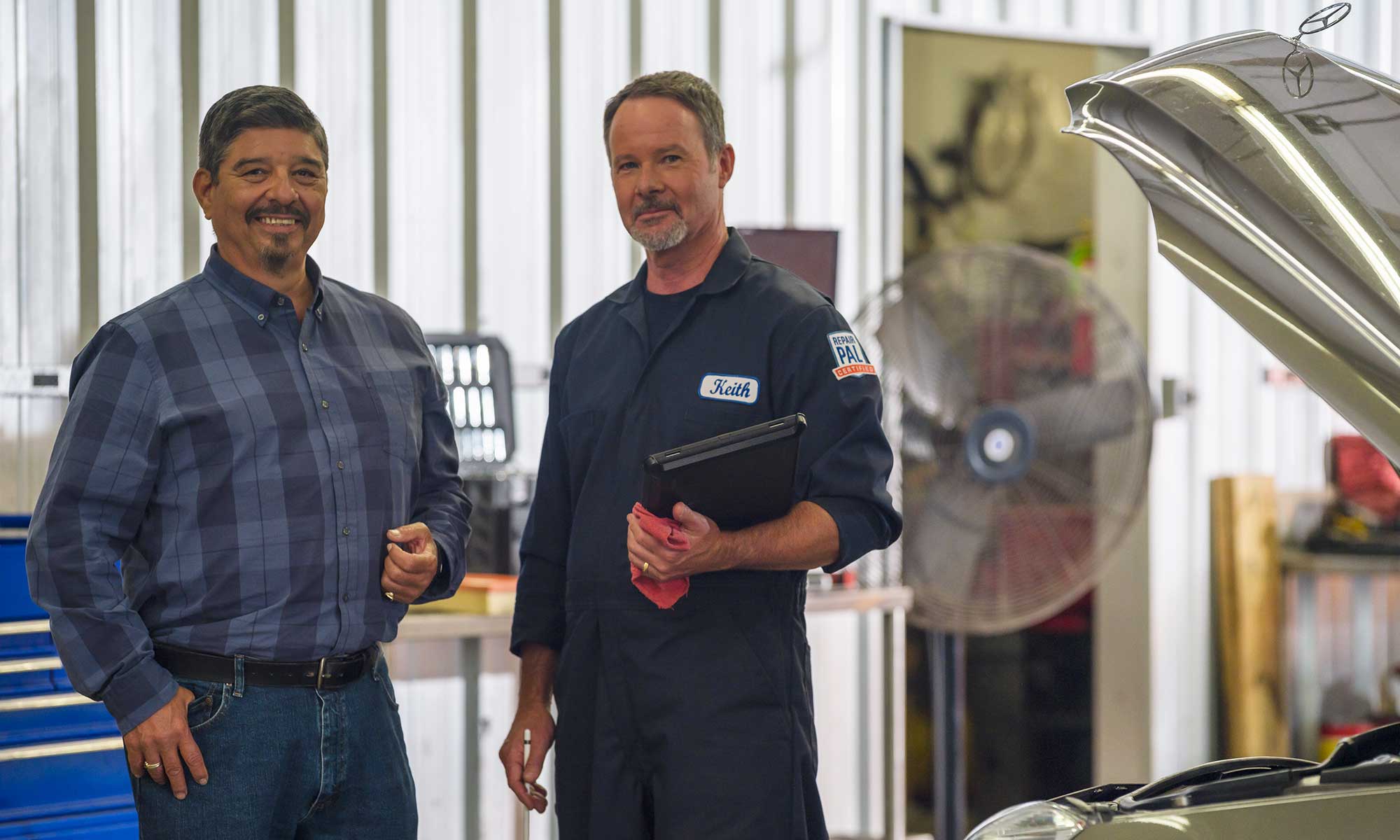The Spring Car Maintenance Checklist You Need

We can finally wave winter goodbye! With spring cleaning fresh on your mind, now is the perfect time to take care of your vehicle and see what needs attention. After all, unless you consider yourself a high-mileage driver, chances are your vehicle hasn’t been off the driveway much in the last few months, so maintenance matters now more than ever to avoid a costly breakdown.
Although technicians can help with more significant tasks like car tune-ups and checking your power steering, there are small ways you can properly maintain your vehicle, and here’s how.
How Do I Prepare My Car for the Spring?
From changing your air filter to getting an oil change, you should try to perform as much maintenance as possible throughout the year. There are small tasks you can do on your own, or visit an ASE-certified repair shop to do the heavy lifting for you.
Routine maintenance not only reduces your chances of experiencing a vehicle breakdown but you essential to keeping your extended warranty coverage active.
Mechanic-Approved Spring Maintenance Checklist

By following these steps to maintaining your vehicle, you’re one step closer to feeling confident on the road.
1. Check Your Tires for Damage
Driving through snow and ice strains your tires’ rubber, so make sure to check the tread depth every few weeks. Most states consider a tire to be legally bald if the tread is less than 2/32 of an inch. If it’s below that limit, your next steps should be getting them replaced.
It’s also worth noting that fluctuations in temperature can have a significant effect on your tire pressure. So as warmer weather arrives, make sure to check your tire pressure with the proper tools.
The recommended pressure is typically 36 pounds-per-square inches (PSI) but varies depending on your specific make and model. For safe measures, check your owner’s manual to ensure you’re correctly inflating your tires.
2. Rotate Your Tires
The time has arrived to switch to all-season radial tires. These tires are designed for a smooth and quiet ride as the tread compounds stay soft and flexible. If you already use all-season tires throughout the year, take the opportunity to have them rotated.
Seasonally rotating tires can extend the life of the set, keeping you safe on the road and saving you money in the long run. Plus, if you live in an area with various potholes, this can also highlight any areas of your tires that may have experienced damage.
3. Clean the Undercarriage
The road salt and grime are great for keeping you on track but silently wreak havoc on your vehicles’ undercarriage. Do your best to wash away the corrosive residue wherever you spot it—paying particular attention to the front and rear bumpers.
A high-pressure sprayer at your local car wash is your best bet to cleaning away all the salt and grime that’s accumulated from the winter. Once everything’s clean, check for rust signs and get them corrected by a trusted ASE-certified repair shop near you.
4. Get the Oil and Filter Changed
Every car maintenance checklist should include regular oil and filter changes. The AAA recommends doing so every 5,000 to 7,500 miles, and with the average American driver hitting 13,476 miles per year, it’s a good idea to schedule changes at the start of spring and fall.
Keeping your vehicle lubricated and tuned makes components last longer, especially for those looking to keep their cars for several years. Lack of oil can also increase fuel consumption, meaning more money is spent on gas than usual.
5. Check Your Car Battery
If your vehicle has been sitting in front of your house with little to no use, then you may be more susceptible to experiencing a dead battery. The lack of activity combined with the extreme cold is a recipe for part failure.
Then, as the weather gets warmer, battery fluids can evaporate and accelerate corrosion. For all these reasons, you should check to see if your vehicle starts correctly and replace the battery if necessary.
Usually, you’d be required to pay the upfront costs of getting a new battery but with plans like EnduranceAdvantage™, up to one replacement is covered, in addition to costly repairs. Learn more about our newest protection plan that can save you thousands on repairs and now maintenance.
6. Check Your Brakes
Stopping in icy conditions is more complicated than on dry roads, so if you drive often in colder climates, your brakes may have been under additional strain than normal.
Test them and listen out for any unusual noises. Even if they sound okay, asking a trusted technician to take a look is always recommended.
As brakes wear down over time, we can become accustomed to how they feel and miss the warning signs when they’re much less responsive than they used to be. If you do find yourself hearing a weird noise, refrain from ignoring it, as this can be your vehicle’s way of warning you that you need new brake pads.
7. Clean the Lights
Grit can make your headlights and taillights look hazy over time. A soft toothbrush, water, and baking soda can do wonders for removing the haze, so get scrubbing until they look new again.
Using your lights more often during the shorter days means bulbs are more likely to need replacing when spring rolls in, so flick the switch and make sure they’re all operational. If any have died, install fresh ones before hitting the road again.
8. Check Fluid Levels
Your dashboard lights usually give a good indication of when fluids are low, but even if they aren’t lit up, a quick check would be best. Some areas to check are brake fluids, transmission fluid, and windshield washer fluids. Recommended levels are indicated wherever you can top them up, so take a look and add more wherever things are low.
Your windshield wiper fluid, in particular, will need some attention now that it’s spring, as driving in wintry conditions generally means struggling to get a clear view. Now that the weather is warming up, you should also check to see if your vehicle’s coolant needs to be topped up or if your air conditioning system needs to be looked at.
When knowing which fluids work best for your specific model, refer to your owner’s manual. There are tons of variations available, but it’s best to stick with the ones recommended by your manufacturer.
9. Replace Your Wiper Blades
Your windshield wipers have likely been working overtime to help you navigate the snow, wind, and rain. This may have worn them down and reduced their efficiency. Although spring doesn’t include much snow, you can expect rain. To avoid driving in dangerous conditions, make it an on-going practice to inspect your wipers and replace them when necessary.
With a little know-how, you can do this quite easily yourself, or a local repair shop can have them changed for you in minutes.
Spring-Clean Your Vehicle Repair Worries Away
Sticking to a strict seasonal maintenance schedule ensures your vehicle is performing correctly, and it’s also essential for keeping any extended warranty contracts in good standing. But with so much to do on such a regular basis, it can be incredibly time-consuming—not to mention expensive.
If this sounds familiar, EnduranceAdvantage™ can make maintenance easier than ever. Not only does Endurance’s newest plan include all the great benefits that come with its plans, but it also offers up to $3,500 in maintenance coverage. All you need to do is take your vehicle to your favorite ASE-certified mechanic, show them proof of your Endurance membership, and take care of the rest.
That’s not all—every Endurance warranty comes with a year’s free membership to Endurance Elite, bringing with it a whole host of excellent everyday driver benefits. Request a free, no-obligation quote today to gain peace of mind.













As both an Army Veteran & ASE Certified repair shop owner, Andrew has made educating the modern driver an ongoing mission since the opening of his repair shop, Midwest City Autospa, in 2012. Read more about Andrew.